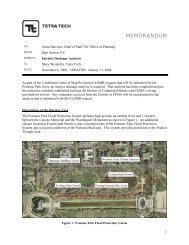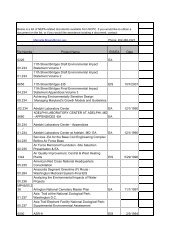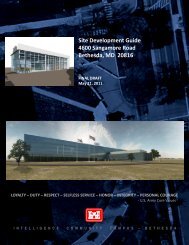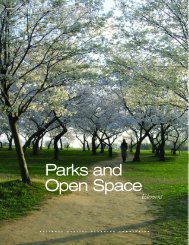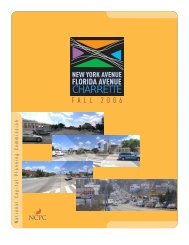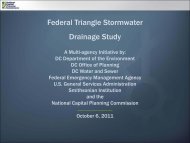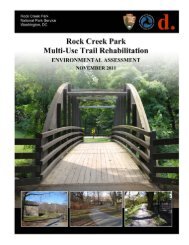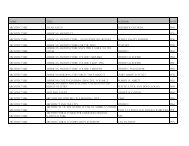Designing and Testing of Perimeter Security Elements - National ...
Designing and Testing of Perimeter Security Elements - National ...
Designing and Testing of Perimeter Security Elements - National ...
You also want an ePaper? Increase the reach of your titles
YUMPU automatically turns print PDFs into web optimized ePapers that Google loves.
<strong>Designing</strong> <strong>and</strong> <strong>Testing</strong><br />
<strong>of</strong> <strong>Perimeter</strong> <strong>Security</strong><br />
<strong>Elements</strong><br />
Thinking Comprehensively:<br />
Building Layout <strong>and</strong> Site Factors<br />
In the design <strong>of</strong> buildings <strong>and</strong> perimeter security,<br />
consideration must be given to building layout <strong>and</strong> site<br />
planning. Underst<strong>and</strong>ing the role <strong>of</strong> building placement,<br />
roadway design, <strong>and</strong> l<strong>and</strong>scapes is critical to designing<br />
effective perimeter security. These aspects play a role in<br />
determining the necessary performance level for any<br />
security barriers incorporated in a building's perimeter.<br />
For example, the placement <strong>and</strong> configuration <strong>of</strong> open<br />
space <strong>and</strong> streets can reduce the need for perimeter<br />
security elements <strong>and</strong> lower the required level <strong>of</strong><br />
performance. Lower required levels <strong>of</strong> performance can<br />
allow for flexibility in design. Designers should take<br />
advantage <strong>of</strong> site characteristics to create successful<br />
perimeter security plans.<br />
Barrier locations for varying building yards<br />
Building Yard 20’ or more<br />
The layout <strong>of</strong> buildings on a block <strong>and</strong> the amount <strong>of</strong><br />
open space between the building edge <strong>and</strong> street are<br />
important factors in determining permissible<br />
penetration levels <strong>of</strong> vehicles. St<strong>and</strong><strong>of</strong>f distance (the<br />
distance between a barrier <strong>and</strong> a protected building) is<br />
an important consideration because sufficient distance<br />
can preclude the need for large <strong>and</strong> expensive security<br />
measures <strong>and</strong> allow the use <strong>of</strong> security elements with<br />
decreased performance levels. Smaller st<strong>and</strong><strong>of</strong>f<br />
distances may require creative design <strong>and</strong> elements<br />
with higher performance st<strong>and</strong>ards.<br />
Further guidance on appropriate<br />
placement <strong>of</strong> security elements is<br />
provided in the <strong>National</strong> Capital Urban<br />
Design <strong>and</strong> <strong>Security</strong> Plan <strong>and</strong> the<br />
agency’s security objectives <strong>and</strong> policies.<br />
No Building Yard<br />
Building Building Yard 20’<br />
Sidewalk Curb Lane<br />
or greater<br />
Street<br />
Building Yard Barrier Detail<br />
(Building Yard 20’ or greater)<br />
Building Sidewalk Curb Lane<br />
Street<br />
8 <strong>National</strong> Capital Planning Commission



